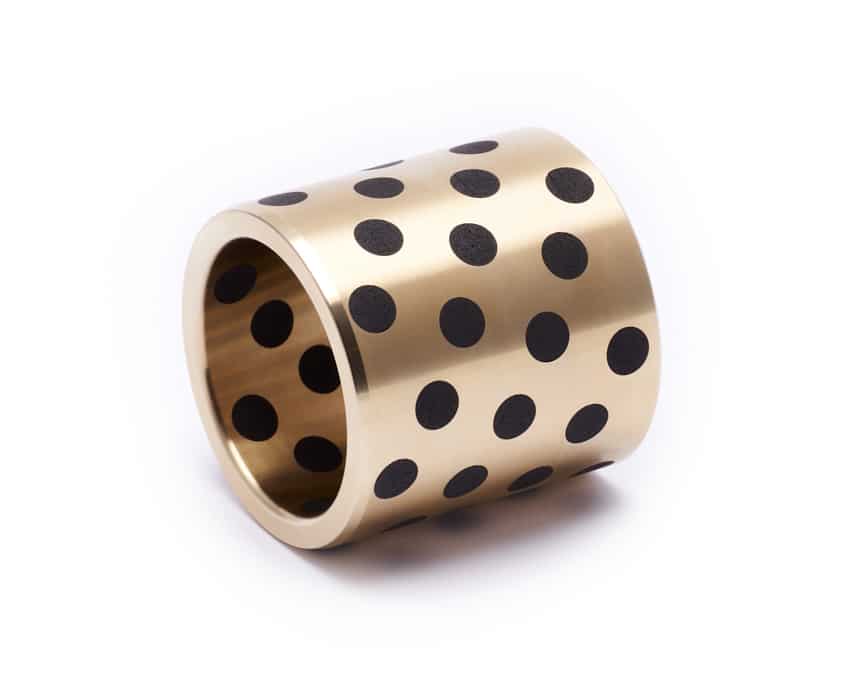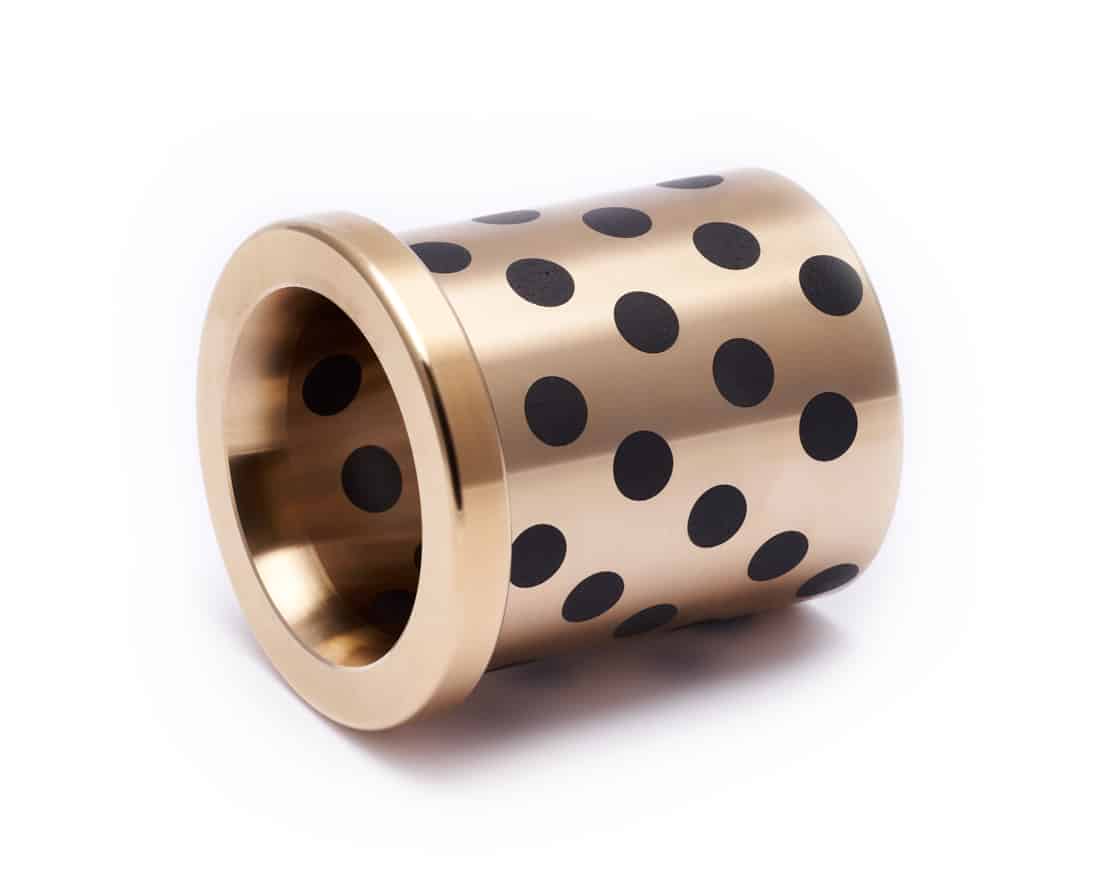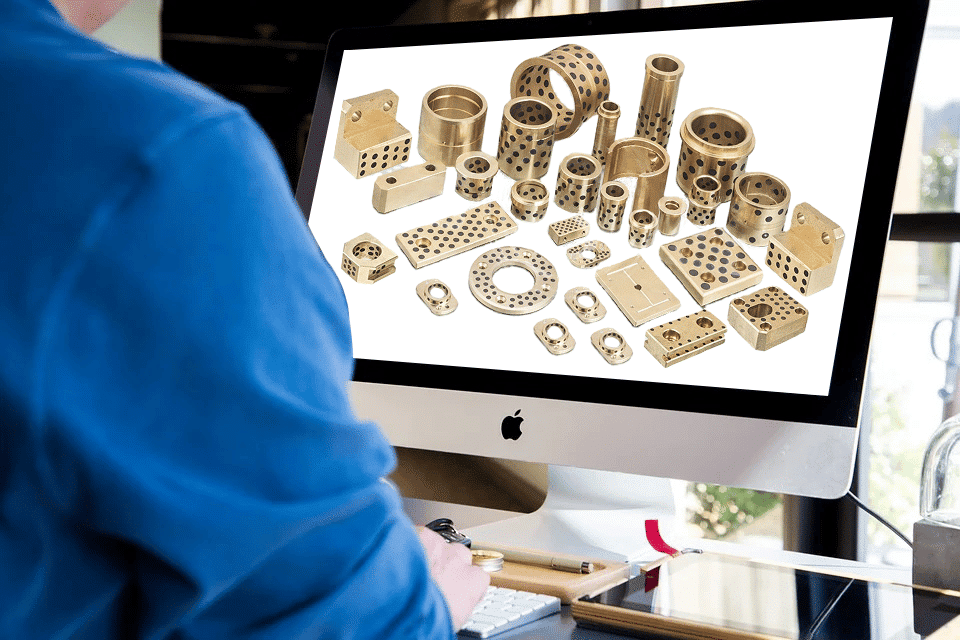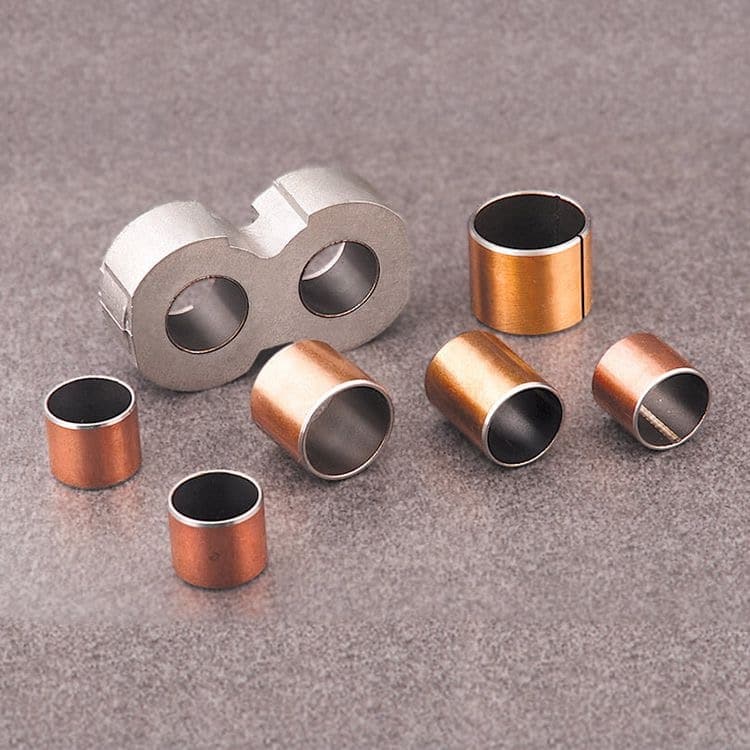Price and delivery time on request
Self-lubricating Flanged bushFactory Order Item
Outstanding Bushing Bearing Provider. Bronzelube stands out as an expert in the supply and manufacturing of bushing bearings, with a focus on exporting OEM Bushing Bearings from China. Renowned for its dependability, straightforward design, and effortless installation, these bearings are extensively utilized across multiple sectors. They offer guaranteed performance, easy installation, low noise operation, and are widely applicable.




Bushing Bearings Sourcing Online
China Exporter Of Bushing Bearings – Sleeve Bushing Manufacturer& Supplier
Discover a wide range of bushing bearings from China’s selection and find the best deals for Industrial Bushings & Plain Bearings. Shop with confidence at bronzelube.com for your sourcing needs.
Purchase Sleeve Bushing Bearings from verified suppliers at competitive factory prices. Obtain instant quotes today! Experience efficient logistics services, secure trade assurance, and comprehensive guides on Bushing Bearings. Expect swift delivery. Available types include Flange Bushing and Sleeve Bushing. Sleeve Bushing Bearing – Access Wholesale Suppliers Online for bulk purchases.

We offer a large selection of graphite copper sleeve and flange bushing.
MAINTENANCE Self-lubricating flange bushing, highly durable, and reliable bushing supplier with or without graphite plugged. Learn more!
CUSTOM-MADE STANDARD PRODUCTS

Learn More
Choose your bushing bearings
Select your bushing bearings from a top-notch exporter specializing in bushing bearings at competitive prices. Begin sourcing your bushing bearings from China today! Access and download the comprehensive Bushing Bearing Catalog. Explore a wide range of Bushing Bearing Products. Various types of Bushing Bearings are available. Key features include the availability of customized sizes, a comprehensive customer guide, and the option to request multiple quotes to suit your specific needs.
Bronze Bushing Bearing
A shaft sleeve is a tubular mechanical component that fits onto a rotating shaft, functioning as an integral part of a sliding bearing. Typically, shaft sleeves are secured to the bearing housing using an interference fit, while maintaining a clearance fit with the shaft itself. These sleeves are often found on propeller shafts or stern shafts in various machinery. A bearing, on the other hand, is designed to support and reduce friction during mechanical operations. Both sleeves and bearings share the common function of bearing the shaft’s load, but they differ in structure and movement. A shaft sleeve is a single, unified structure, where rotation involves relative motion between the shaft and the sleeve. In contrast, a bearing is a split structure with internal and external rings that move relative to each other. Essentially, a sleeve is a type of sliding bearing, with the bearing bush acting like the bearing’s outer ring. The shaft sleeve operates as a single unit with relative motion to the axis, whereas the bearing bush, composed of several pieces, rotates around the axis.
Common Failure Cause: Over time, the surface of the shaft under a shaft sleeve can undergo permanent deformation due to the combined effects of extrusion pressure and mechanical forces. This deformation, often in the range of 0.1mm to 0.3mm, can lead to a reduction in the necessary tightness and fitting force between the shaft sleeve and the spindle. Consequently, a gap forms, resulting in wear and potential failure of the shaft sleeve.
Bushings vs. Bearings: Understanding the Differences
The key distinction between bearings and bushings lies in their structure and function. A bushing, often referred to as a shaft bushing or axle bushing, is essentially a type of sliding bearing. The primary role of bearings is to support mechanical rotating bodies, reduce the friction coefficient during movement, and ensure precise rotation. On the other hand, a shaft sleeve is a cylindrical part on a rotating shaft, serving as a component of a sliding bearing.
Shaft Sleeve
- Function: Mounted on the shaft, the shaft sleeve acts as a protective layer for the shaft.
- Maintenance Advantage: Worn-out shaft sleeves can be easily replaced, preventing direct wear on the shaft and thus reducing maintenance costs.
Bearing
- Role: Bearings support the rotating shaft, effectively reducing friction during operation.
Similarities and Differences
- Common Function: Both shaft sleeves and bearings share the load of the shaft.
- Structural Difference: The shaft sleeve is a unified structure where the rotation occurs between the shaft and the sleeve itself. In contrast, bearings are split-type structures, where rotation occurs between the inner and outer rings of the bearing.
Self-Lubricated Bushings
- Made in China: Various types of self-lubricated bushings are manufactured in China, designed to reduce the need for frequent maintenance while ensuring smooth operation.
While both bushings and bearings serve to support shafts and reduce friction, their structural differences define their specific applications and maintenance requirements. Self-lubricated bushings offer an added advantage of reduced upkeep, making them a practical choice in many scenarios.
A Comprehensive Guide to Bushing Bearings: Exploring Designs and Materials
Introduction
In the world of mechanical engineering, the role of bearings and bushings is indispensable. These components are crucial for reducing friction and ensuring smooth operation in various machinery. As a key player in this field, our company specializes in manufacturing bushings, offering a diverse range of designs and materials. This guide will delve into the intricate world of bushing bearings, helping you understand their significance and variety.
Understanding Bushing Bearings
Bushing bearings, a critical subset of bearings, are designed to bear loads and reduce friction between rotating parts. They come in various forms, often tailored to specific applications and machinery requirements. Unlike traditional bearings, bushings typically involve simpler designs and are used in scenarios where minimal movement is required.
The Variety of Designs
Our bushing bearings come in an array of designs, each suited to different mechanical needs. Some of the popular types include:
- Flanged Bushings: Ideal for applications requiring axial guidance.
- Cylindrical Bushings: Perfect for applications where radial loads are predominant.
- Spherical Bushings: Designed for angular movements, these are great for accommodating misalignment.
Each design offers unique benefits, from load-bearing capacity to accommodation of different movement types.
Material Choices
The choice of material is crucial in bushing bearing manufacturing. We provide bushings in a range of materials, including:
- Bronze: Known for its strength and corrosion resistance, bronze bushings are ideal for heavy-duty applications.
- Plastic: Offering excellent wear resistance and a low friction coefficient, plastic bushings are suitable for lightweight applications.
- Composite Materials: These bushings provide a balance between strength and flexibility, making them versatile for various applications.
Applications of Bushing Bearings
Bushing bearings find applications in numerous fields, including:
- Automotive: In suspension joints, steering systems, and more.
- Industrial Machinery: In conveyor systems, hydraulic cylinders, etc.
- Aerospace: For control mechanisms and other critical components.
Why Choose Our Bushings?
- Customization: We cater to specific client needs with customized sizes and materials.
- Quality Assurance: Our bushings undergo rigorous testing to ensure top-notch performance.
- Innovation: We continuously research and develop new designs and materials to meet evolving industry demands.
Conclusion
Bushing bearings are a vital component in reducing friction and ensuring the longevity of mechanical systems. Our extensive range of designs and materials caters to a wide array of applications, offering solutions that are both innovative and reliable. Whether you’re in the automotive, industrial, or aerospace sector, our bushings are designed to meet your unique requirements, ensuring efficiency and durability in your machinery.
Inspection Guidelines for Shaft Sleeves
Appearance Quality:The surface of the sample should be free from defects such as bubbles and burrs, and should not show any signs of deformation. The material should be consistent and free from any strong odors.
Dimensional Accuracy: Relevant dimensions should be measured with vernier calipers and must meet the specifications outlined in technical documents and drawings.
When paired with a rotating shaft, the shaft sleeve should not slide off under its own weight when the rotor is positioned vertically downwards.
Heat and Aging Resistance:After undergoing a ball pressure test at 125℃ for 1 hour, the sample’s indentation should be no more than 2mm, with no visible deformation.
A visual inspection after keeping the sample in an oven at 120℃ for 96 hours should show no signs of embrittlement or deformation.
Fire Resistance: The shaft sleeve should have a flame retardant rating of VW-1. When exposed to an alcohol lamp flame for 15 seconds, it should extinguish within the same duration.
Packaging and Labeling:Packaging should be sturdy, reliable, and protective, ensuring no damage during transportation.
Labels must include the supplier code and name, product name, quantity, material code, quality inspection mark, production date, and other relevant details, all clearly and accurately printed. Mixed packaging is to be avoided. For product traceability, the production batch number should be prominently displayed on the external packaging. This number should also be referenced in the original records of the inspection certificate or inspection/test report.
Hazardous Substance Content (RoHS Compliance):If the shaft sleeve is intended for use in machines governed by the RoHS directive, it must comply with the stipulations of the RoHS directive regarding hazardous substances.






